Title : Diagnostic performance of salivary PCR for the detection of congenital cytomegalovirus: A systematic review and meta-analysis
Abstract:
Background: Congenital cytomegalovirus (cCMV) is a leading cause of neonatal morbidity, including sensorineural hearing loss. Early detection is critical; however, the current gold standard, urinary PCR, faces feasibility challenges in neonates. Salivary PCR offers a more practical alternative, but its diagnostic accuracy remains debated. This systematic review and meta-analysis evaluated the diagnostic performance of salivary PCR compared to urinary PCR in detecting cCMV.
Methods: A systematic review and meta-analysis were conducted according to PRISMA guidelines, including observational studies that compared salivary PCR to urinary PCR in neonates (≤28 days). Eligible studies reported sensitivity (SN), specificity (SP), positive predictive value (PPV), and negative predictive value (NPV). Data extraction and quality assessment were performed using Covidence and QUADAS-2. Missing values were calculated using the Binomial Proportion and Wilson Score Interval. Meta-analysis was performed using R with a random-effects model (DerSimonian and Laird method).
Results: Fifteen studies involving 29,617 neonates were included. Most were prospective cohort studies published between 2021 and 2025. Salivary PCR demonstrated high diagnostic accuracy with a sensitivity of 0.99 (95% CI: 0.97–1.00) and specificity of 1.00 (95% CI: 1.00–1.00). NPV was 1.00 (95% CI: 1.00–1.00), and PPV was 0.91 (95% CI: 0.86–0.97), though moderate heterogeneity was observed (I² = 51.49%).
Subgroup analysis across three populations—general neonates, high-risk neonates, and infants of seropositive mothers—confirmed high performance. In the general neonatal group (n = 27,798), the test showed the highest diagnostic odds ratio (DOR: 11,637.97), specificity (0.999), and PLR (701.29), with SN of 0.987. Among seropositive mothers (n = 283), sensitivity was highest at 0.997, and AUC reached 0.997, though DOR and PLR were lower. High-risk neonates (n = 1,536) had slightly lower SN (0.986) but maintained high SP (0.999) and acceptable DOR (977.72). Across all groups, NPV remained consistently >0.999, while PPV ranged from 0.91 to 0.996.
Conclusions: Salivary PCR is a highly reliable screening tool for cCMV, demonstrating excellent sensitivity, specificity, and NPV across diverse neonatal populations. While PPV varied slightly, particularly in high-risk and seropositive groups, diagnostic performance remained strong. These findings support salivary PCR as a practical and effective alternative to urinary PCR, with confirmatory testing advised in select cases.



